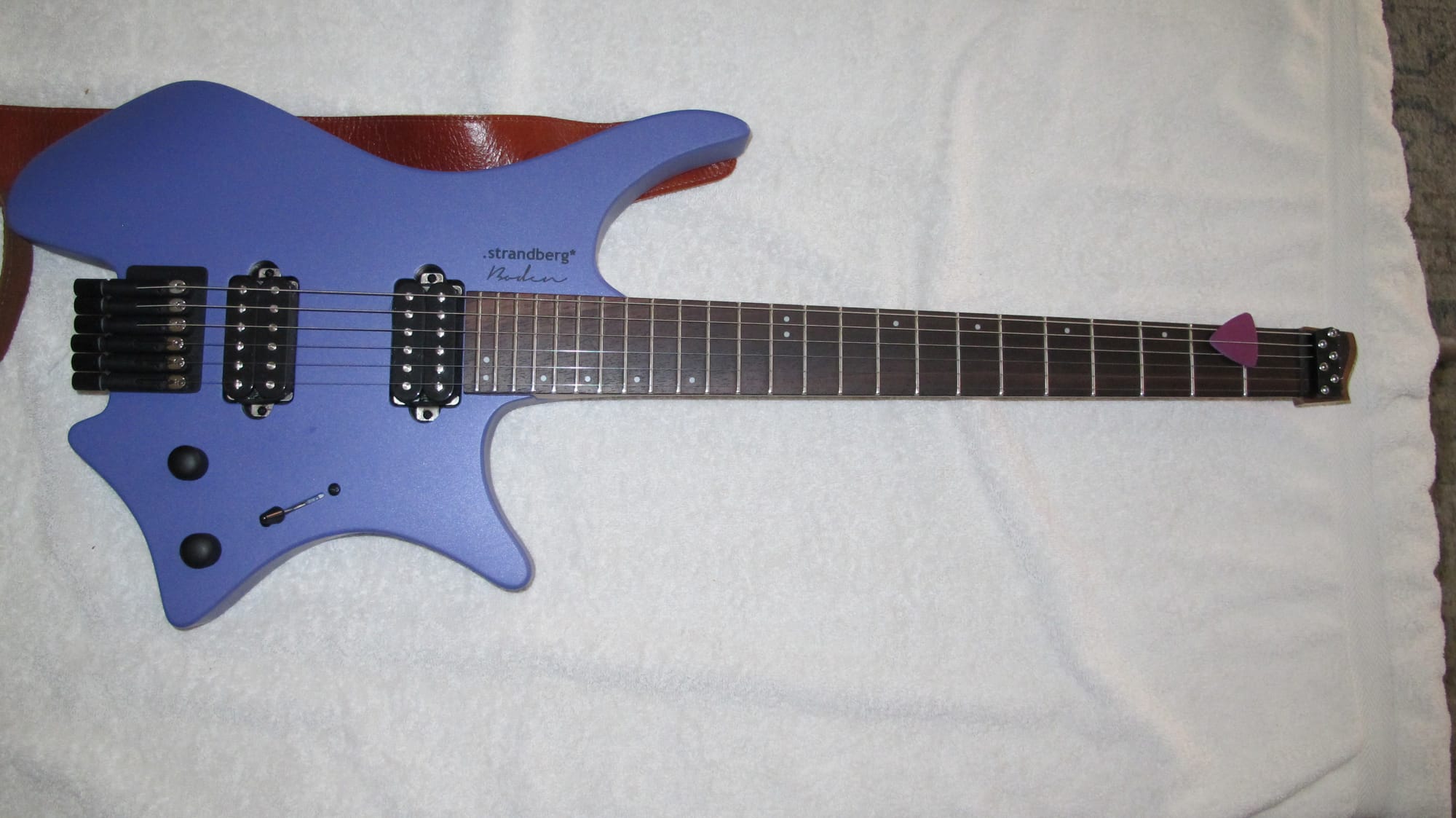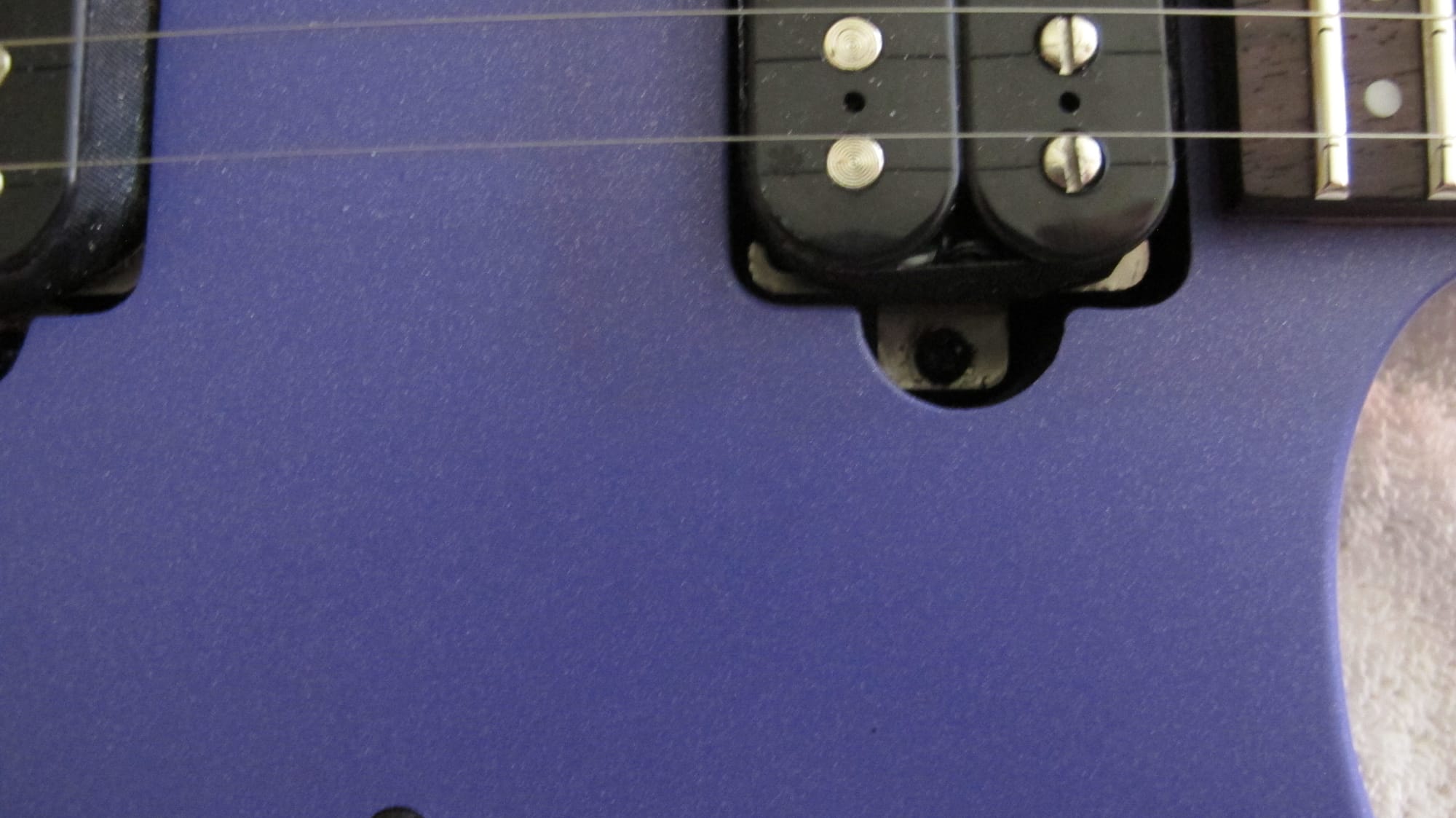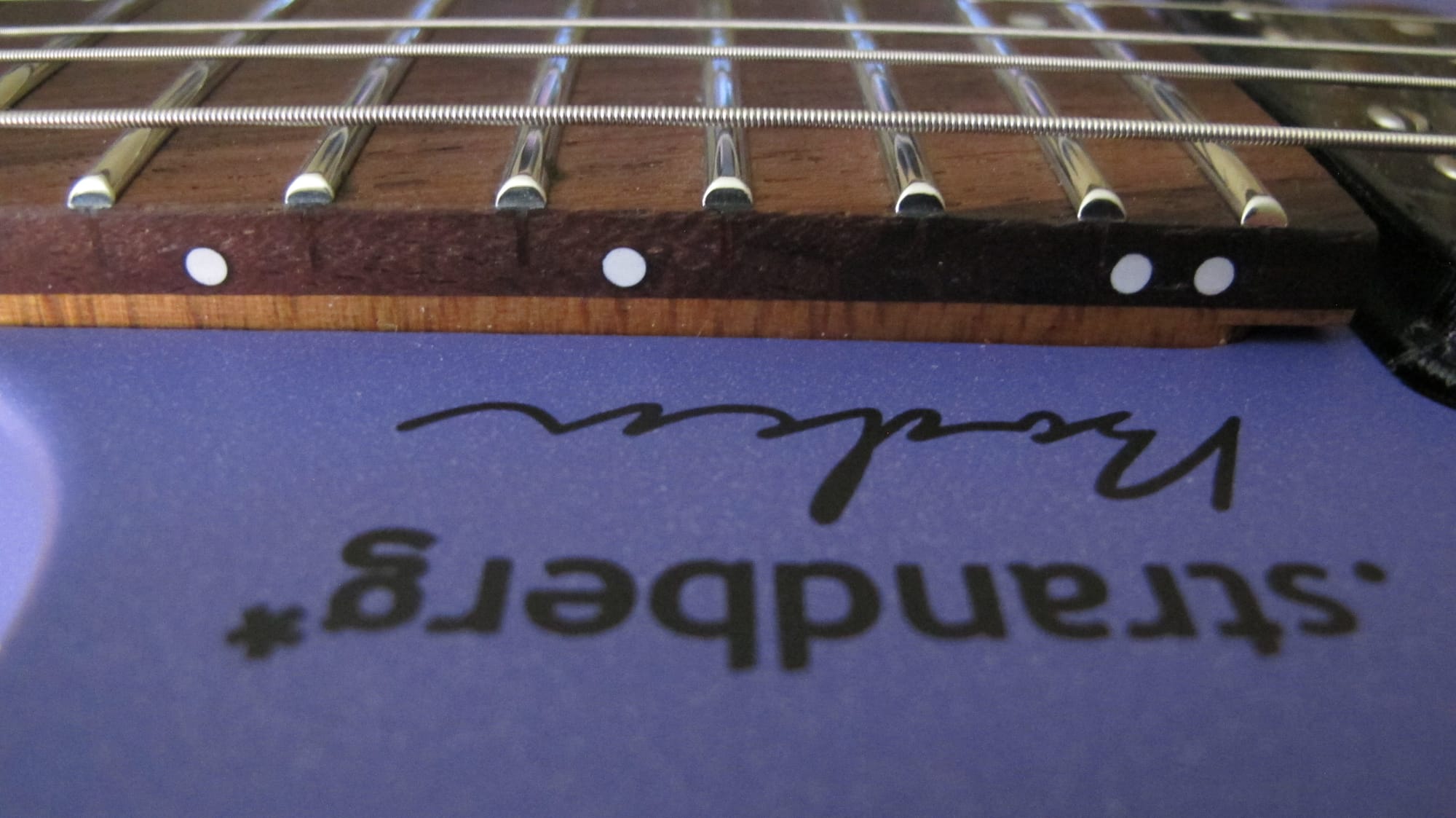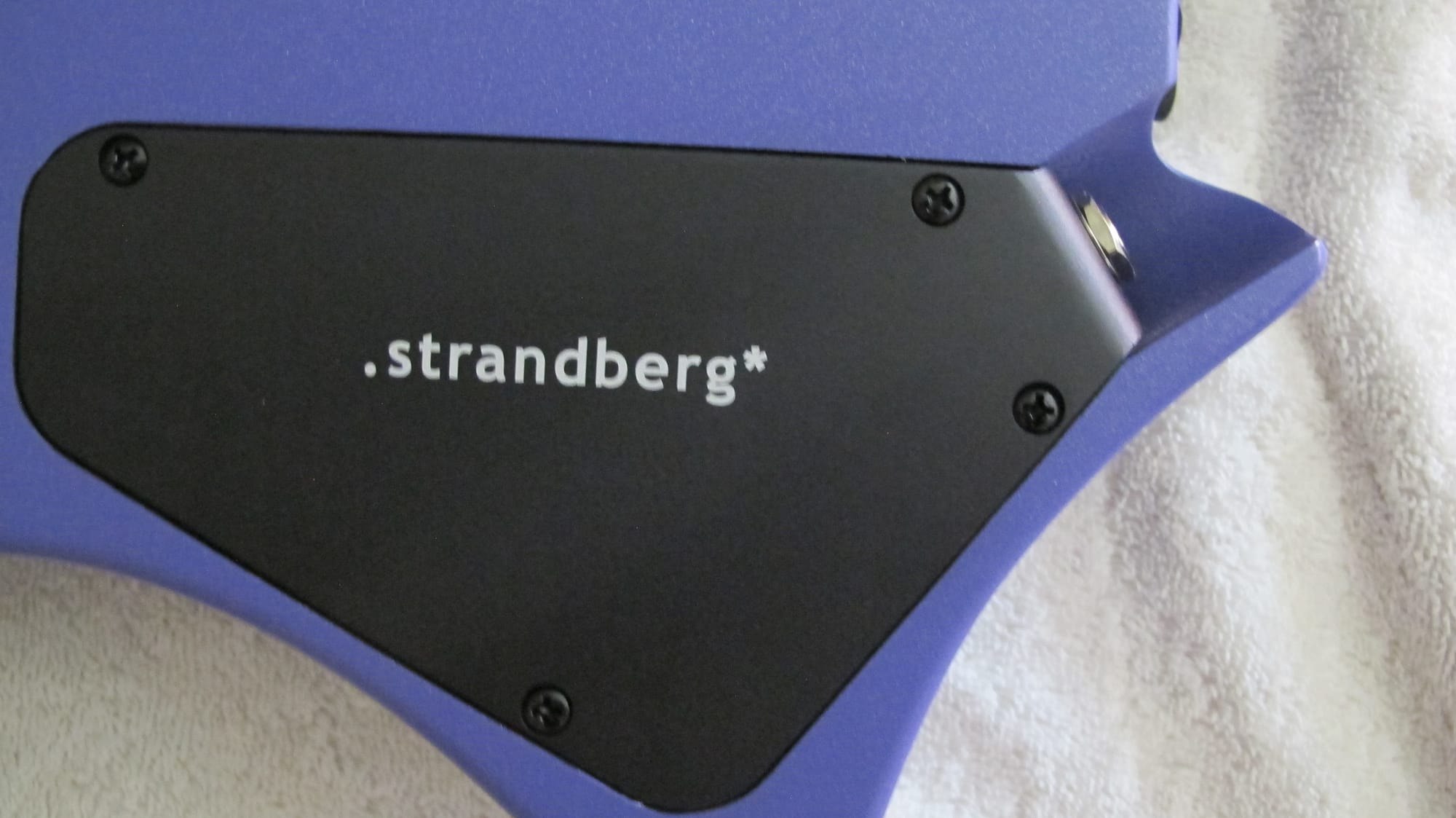One Week - Strandberg Bodin Essential
My latest acquisition is a Strandberg headless guitar, with the Endur neck, designed to be ergonomically correct. The fit, finish, and polish of this instrument is in no way budget.

One of the shitty things about being at a point in life where I can afford to buy pretty much any guitar that I want, is that I am also at an age where I am beginning to have musculo-skeletal issues that prevent me from truly enjoying it.
In my case, about 14 years ago, my left thumb began giving me problems. At first, I thought that I had jammed it, like when you play basketball, and the tingling and discomfort was bad. Alas, when it failed to get better after a few weeks, I made an appointment with a local orthopedic specialist (I lived in Phoenix at the time) and an x-ray revealed that in the base of my thumb, there was essentially no cartiledge remaining, basically, bone on bone.
Bummer.
One of the big problems was that it made gripping the neck of a guitar rather uncomfortable. And that was an understatement.
Anyhow, I have continued to play, but as the conditioned progressed, further into my left hand (my pinkie finger is pretty gimpy now), I have become more limited in what I can and can't play.
It sucks.
Regardless, when I learned that a Swedish company makes these guitars with a unique neck design that provides a different ergonomic profile, and that in many cases, people who have similar issues as me, swear that this innovative neck design, a trapezoidal profile, encourages one to place the hand in a consistent position that reduces stress.
And having played this new guitar for a few hours each day, it does seem to work. No, the pain isn't gone, but it is manageable.
On to the guitar
Strandberg guitars were started when the founder who had been making hardware for headless guitars (mostly tailpieces) decided to go to the next step and make instruments. They designed the guitar, but they wisely contracted with the Cort company in Indonesia to manufacture the instruments.
The first guitars were high end instruments that started at abut $2,000 and went up to multiple thousands of dollars, and they had a lot of high end accoutrements, including tempered scale fret work, multiscale (fan frets), and 6, 7, and even 8 string instruments.
They were wildly successful, but the pricing was a bit of a hurdle for mere mortals to take a flyer on to buy. $2K + for something very different is a big nut to crack.
Enter the Essential line. It is a Strandberg, it is headless (that makes it compact and light), it has quality pickups and wiring, a roasted maple neck, a rosewood (Indian?) fretboard, 24 stainless steel frets, no fan-fret or multiscale, no Fishman Fluense pickups (or Suhr pickups), no maple cap on an ash body.
The body is Meranti, a tropical ash analog, it is painted with a matte finish (I chose the purple variant, my favorite).

The pickups are built to Strandberg's spec, and frankly, they sound great. I plugged into my bog standard Orange Rocker 15 amp, the clean channel, and all 5 positions are very different and versatile. I also noticed that they are potted to prevent microphonic feedback.

The pickups and switching give you humbucker in the bridge, humbucker with the inner coil of the neck, the inner of the neck and the bridge, and ultimately in the 5th position the full neck humbucker. You get that crunchy metal tone, you get a spank-y tele sound, the jangly Strat single coil sound, and a lot of versatility if you roll off the volume and tone controls.
The pots for the tone and volume control are smooth, and very linear in response. Absolutely no issues (my cheaper Harley Benton guitars have cheaper feeling potentiometers.)
The Cort corporation makes very high quality instruments, and one of the key indicators is the quality of the fretwork. Stainless steel frets (as opposed to the nickle/copper that used to be standard) are pretty much expected today. They are a bit more difficult to work with, being harder than the older materials, but their longevity and resistance to wear make it worth while. Cheaper guitars with stainless frets often have some issues with overhang, dressing of the ends, and the polish. This guitar has flawless fretwork. No sprouting of the ends, mirror finish, and no dead spots.

The jack is interesting on this instrument. It is part of the cover of the electronics, and it is hidden behind the instrument. To me it feels a bit weird, since I am used to traditional instruments. But while I had the guitar on it's front, I pulled the cover off and looked at the wiring. I didn't get a pic of it, but the wiring isn't a cheak harness, but it is hand wired, and the solder joints are impeccable. I expect no issues over a long life.

The overall fit and finish are outstanding. The body paint is a bit sparkly, the matte texture is comfortable and provides a remarkably solid anchoring for my pinky when I am doing some cross-picking.
The guitar is lightweight. A little over 5 pounds, it is a good 4 pounds lighter than my Charvel.
It has no tremolo (whammy bar), and that is fine with me. I am not a super user of that, even though a few of my other guitars have one.
The action came set perfectly at 3/64ths of an inch at the 12th fret, low, but no buzz. The intonation is perfectly set, and the tuning stability with the standard strings (10-46 D'Addario NYXL's) is outstanding. Apart from a quick tuning after unboxing it, it has required only a couple of minor tweaks to keep it perfect all week.
The neck is divine. The shape took a couple minutes to acclimate to, and then I mostly forgot about it. I do switch to other guitars, and I can tell the difference, but even the thin, fast Charvel neck feels painful to play after spending hours with the Strandberg.
In short, for their "budget" guitar (and $1,100 is hardly a "budget" instrument) it is a dream to play. I am not sure I would have taken the flyer on their Prog series, or other standard versions, but I feel pretty darned good about this piece of wood and steel. It will remain in my coterie of guitars!




